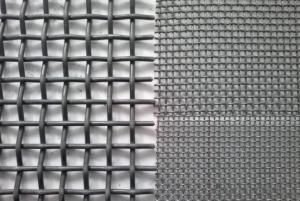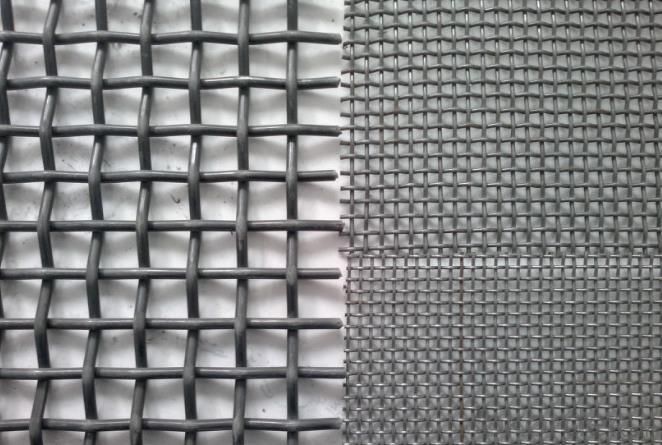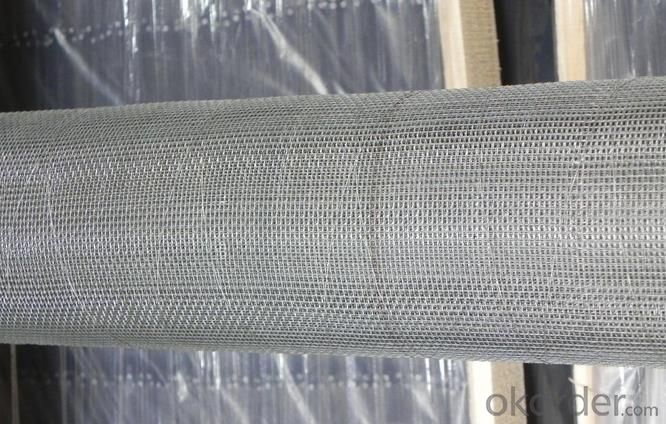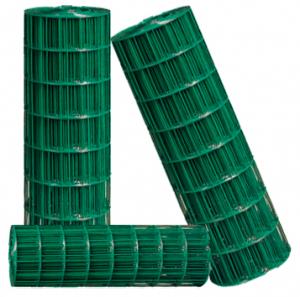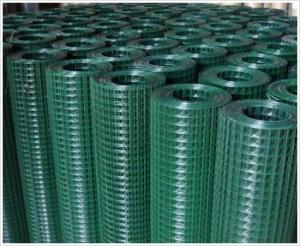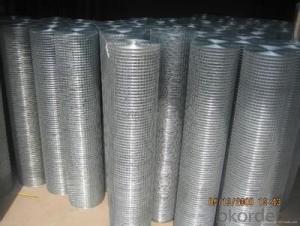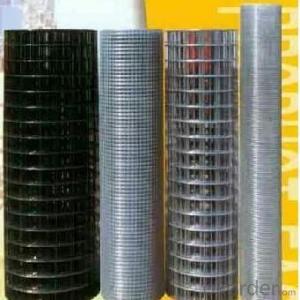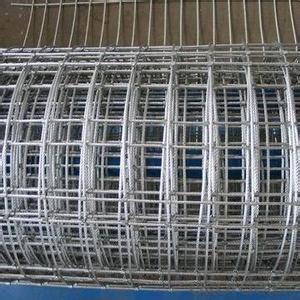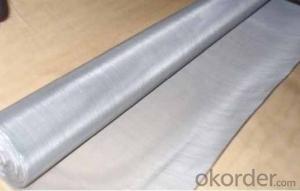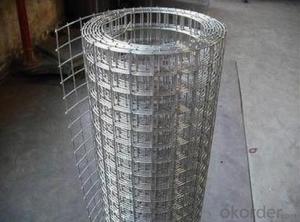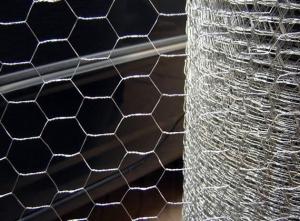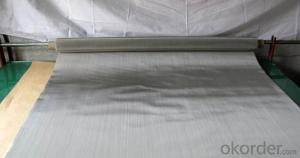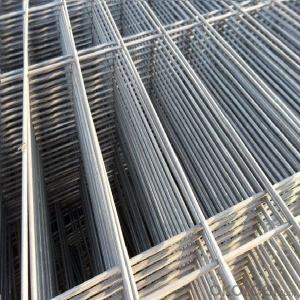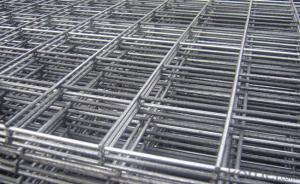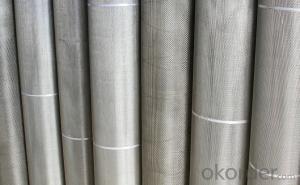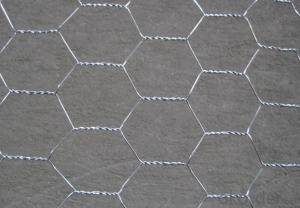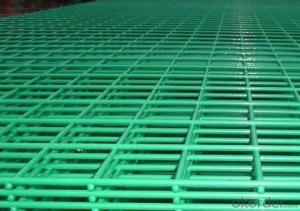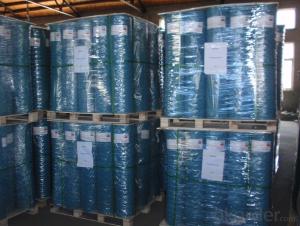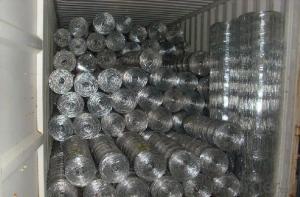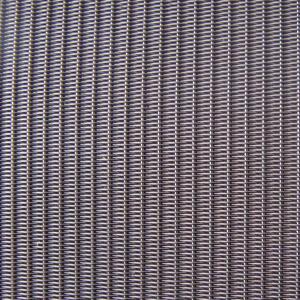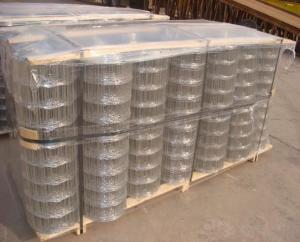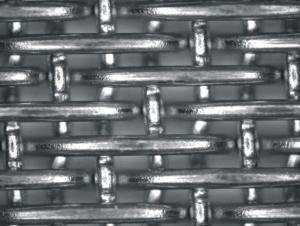High Quality Square Wire Mesh Panel
- Loading Port:
- China Main Port
- Payment Terms:
- TT OR LC
- Min Order Qty:
- -
- Supply Capability:
- -
OKorder Service Pledge
Quality Product, Order Online Tracking, Timely Delivery
OKorder Financial Service
Credit Rating, Credit Services, Credit Purchasing
You Might Also Like
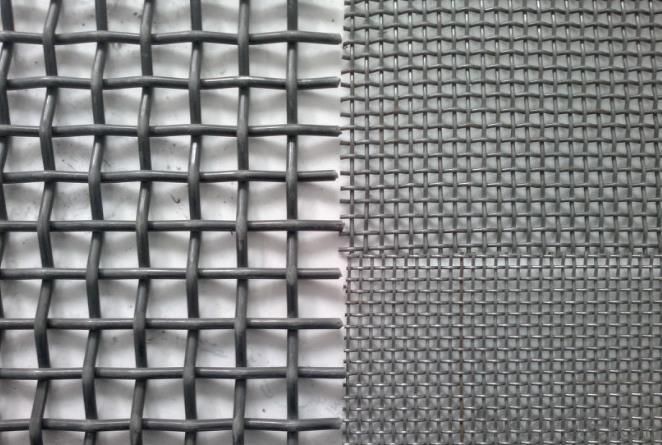
Quick Details
| Place of Origin: | Material: | Type: | |||
| Application: | Weave Style: | Wire Diameter: | |||
| Technique: | Model Number: |
Packaging & Delivery
| Packaging Detail: | Waterproof paper inside and wooden case outside |
| Delivery Detail: | Depend on amount |
Galvanized crimped wire mesh | ||||
Wire gauge SWG | Wire diameter (mm) | Mesh /inch | Aperture (mm) | Weight kg/m² |
14 | 2.00 | 21 | 1 | 4.2 |
8 | 4.05 | 18 | 1 | 15 |
25 | 0.50 | 20 | 0.61 | 2.6 |
23 | 0.61 | 18 | 0.8 | 3.4 |
24 | 0.55 | 16 | 0.1 | 2.5 |
24 | 0.55 | 14 | 0.12 | 4 |
22 | 0.71 | 12 | 0.14 | 2.94 |
19 | 1.00 | 2.3 | 0.18 | 1.45 |
6 | 4.80 | 1.2 | 2 | 20 |
6 | 4.80 | 1 | 2 | 20 |
6 | 4.80 | 0.7 | 3 | 14 |
14 | 2.00 | 5.08 | 0.3 | 12 |
14 | 2.00 | 2.1 | 1 | 2.5 |
14 | 2.00 | 3.6 | 1.5 | 1.9 |
- Q: How is steel wire mesh used in reinforcement of waste treatment facilities?
- Steel wire mesh is commonly used in the reinforcement of waste treatment facilities due to its high tensile strength and durability. It is primarily used to reinforce concrete structures such as walls, floors, and tanks in these facilities. In waste treatment facilities, there are various processes involved such as waste collection, sorting, and treatment. These processes often produce a significant amount of waste material that needs to be stored or contained. Steel wire mesh is used to reinforce the concrete structures that are built to contain and store this waste. The main purpose of using steel wire mesh is to enhance the structural integrity and strength of the concrete. The mesh is typically laid within the concrete mixture during construction, forming a grid-like pattern that adds reinforcement throughout the structure. This helps to distribute and resist the forces and pressures that the waste material may exert on the concrete walls, floors, or tanks. Furthermore, steel wire mesh also helps to prevent cracking and improve the overall durability of the concrete structures. The mesh acts as a reinforcement layer that holds the concrete together, reducing the risk of cracks and ensuring the structure remains intact over time. Additionally, steel wire mesh can be used to reinforce concrete pipes and drainage systems in waste treatment facilities. These pipes and systems are crucial for the efficient management and disposal of waste and wastewater. Reinforcing them with steel wire mesh improves their strength and resistance to external forces, ensuring they can withstand the demands of the waste treatment processes. Overall, steel wire mesh plays a vital role in the reinforcement of waste treatment facilities by enhancing the strength, durability, and structural integrity of the concrete structures. It provides a reliable solution for withstanding the forces and pressures exerted by waste materials and helps ensure the long-term functionality and safety of these facilities.
- Q: Can steel wire mesh be recycled?
- Yes, steel wire mesh can be recycled. Steel is one of the most commonly recycled materials in the world, and wire mesh made from steel can also be recycled. The recycling process involves collecting the used wire mesh, melting it down, and reforming it into new steel products. This not only helps to reduce waste and conserve resources but also saves energy as recycling steel requires less energy compared to producing steel from virgin materials. Therefore, if you have steel wire mesh that is no longer needed, it is recommended to recycle it rather than disposing of it in the trash.
- Q: Is steel wire mesh suitable for use in HVAC ducts?
- Yes, steel wire mesh is suitable for use in HVAC ducts. Steel wire mesh is a strong and durable material that can withstand the high pressure and air flow in HVAC systems. It provides excellent airflow and ventilation, allowing for efficient distribution of heated or cooled air throughout the ductwork. Additionally, steel wire mesh is resistant to corrosion, moisture, and fire, making it a reliable choice for HVAC ducts. It also helps in preventing the entry of pests and debris into the ducts, ensuring clean and healthy air circulation. Overall, steel wire mesh is a suitable and practical option for use in HVAC ducts.
- Q: How is steel wire mesh fire-resistant?
- Steel wire mesh is fire-resistant due to its high melting point and ability to withstand high temperatures. Steel has a melting point of around 1370 degrees Celsius, which is significantly higher than the typical temperatures reached in a fire. This property allows steel wire mesh to retain its structural integrity even when exposed to intense heat. Additionally, the open structure of the mesh allows for better air circulation, which can help prevent the buildup of heat and flames.
- Q: How does the surface pattern affect the grip of steel wire mesh?
- The surface pattern of steel wire mesh plays a crucial role in determining its grip. The grip of wire mesh refers to its ability to securely hold objects or provide traction. The surface pattern of wire mesh refers to the specific arrangement and design of the raised or textured features on its surface. These patterns can range from simple to complex and can significantly impact the grip characteristics of the mesh. A rough or textured surface pattern on the wire mesh enhances its grip by increasing the contact area between the mesh and the object or surface it is in contact with. The irregularities or protrusions on the surface pattern create more friction, ensuring a stronger grip. This is particularly useful in applications where grip is essential, such as in industrial settings where wire mesh is used as flooring or walkways to prevent slipping. On the other hand, a smooth surface pattern may reduce the grip of the wire mesh. A smooth surface offers less friction and contact area, making it less effective in providing a secure grip. However, there may be instances where a smooth surface pattern is desired, such as in certain architectural or decorative applications. It is important to consider the intended use and requirements when selecting wire mesh with an appropriate surface pattern. Factors such as load-bearing capacity, environmental conditions, and the type of objects or surfaces that will come into contact with the mesh should be taken into account. By choosing the right surface pattern, the grip of steel wire mesh can be optimized for various applications, ensuring safety, stability, and functionality.
- Q: How is steel wire mesh used in reinforcement of pharmaceutical facilities?
- Steel wire mesh is commonly used in the reinforcement of pharmaceutical facilities due to its high strength and durability. It is typically installed in the form of panels or sheets to provide structural support and enhance the overall integrity of the facility. In pharmaceutical facilities, steel wire mesh is primarily used in areas where concrete is being poured, such as floors, walls, and ceilings. The mesh is placed within the concrete to prevent cracking and improve the load-bearing capacity of the structure. It acts as a reinforcement, distributing the load more evenly and reducing the risk of structural failure. The use of steel wire mesh in pharmaceutical facilities also helps with the prevention of shrinkage cracks and improves the resistance to thermal expansion and contraction. This is particularly important in environments where temperature and humidity variations can occur, as it helps maintain the stability and integrity of the facility. Additionally, steel wire mesh can be used as a safety measure to prevent the penetration of rodents, insects, and other pests. By installing mesh barriers in openings such as vents, windows, and door frames, pharmaceutical facilities can ensure a hygienic and controlled environment, preventing contamination of products and maintaining regulatory compliance. Overall, the use of steel wire mesh in the reinforcement of pharmaceutical facilities offers numerous benefits, including enhanced structural integrity, improved resistance to cracking and shrinkage, and increased safety and hygiene measures. It plays a crucial role in maintaining the quality and functionality of these facilities, ultimately supporting the production of safe and effective pharmaceutical products.
- Q: Can steel wire mesh be used for creating gabion walls?
- Yes, steel wire mesh can be used for creating gabion walls. Gabion walls are typically constructed using a mesh made of galvanized steel wire, which is strong and durable. The steel wire mesh acts as a flexible container that is filled with stones or other materials to create a stable and erosion-resistant wall.
- Q: How does steel wire mesh perform in magnetic properties?
- Steel wire mesh is typically characterized by low magnetic permeability, thereby rendering it resistant to the influence of magnetic fields. As a result, it proves to be an appropriate material for scenarios that require minimal magnetic interference, such as electromagnetic shielding or regions with substantial magnetic fields. Nevertheless, it is crucial to acknowledge that the magnetic attributes of steel wire mesh may differ depending on the particular alloy and manufacturing technique employed.
- Q: What are the different gauges available in steel wire mesh?
- Steel wire mesh is available in a variety of gauges to meet different application requirements. The gauge of a steel wire mesh refers to the thickness of the wire used in the mesh construction. The most commonly available gauges for steel wire mesh are 6, 8, 10, 12, 14, 16, 18, 20, 22, 24, 26, 28, 30, and 32. A lower gauge number indicates a thicker wire, while a higher gauge number indicates a thinner wire. For instance, a 6-gauge steel wire mesh will have a thicker wire compared to a 32-gauge mesh. The choice of gauge depends on the intended use of the steel wire mesh. Thicker gauges, such as 6 and 8, are often used for heavy-duty applications that require high strength and durability, such as security fencing, industrial applications, and construction projects. Thinner gauges, such as 26 and 28, are commonly used for lighter applications, such as screens, filters, and decorative purposes. It is important to select the appropriate gauge based on the specific requirements of the project. Factors such as load-bearing capacity, visibility, airflow, and corrosion resistance should be considered when choosing the gauge of the steel wire mesh. Consulting with a reputable supplier or manufacturer can help in determining the most suitable gauge for a particular application.
- Q: What are the load-bearing capabilities of steel wire mesh?
- The load-bearing capabilities of steel wire mesh depend on various factors such as the thickness of the wire, the size and spacing of the openings, and the overall design and installation of the mesh. However, in general, steel wire mesh is known for its high strength and durability, making it capable of supporting heavy loads. It is commonly used in construction, mining, and industrial applications where it can withstand significant forces and provide structural stability.
Send your message to us
High Quality Square Wire Mesh Panel
- Loading Port:
- China Main Port
- Payment Terms:
- TT OR LC
- Min Order Qty:
- -
- Supply Capability:
- -
OKorder Service Pledge
Quality Product, Order Online Tracking, Timely Delivery
OKorder Financial Service
Credit Rating, Credit Services, Credit Purchasing
Similar products
Hot products
Hot Searches
Related keywords
